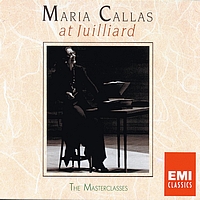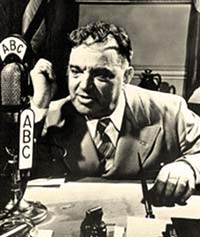“Sociopaths love power. They love winning. If you take loving kindness out of the human brain, there’s not much left except the will to win.”
Martha Stout (quoted in Jon Almond, The Psychopath Test: A Journey Through the Madness Industry)
Archives for July 2011
CD
Booker T. and the MGs, The Definitive Soul Collection (Atlantic/WEA, two CDs). This 2006 collection of thirty tracks by the R-&-B counterpart of Count Basie’s All-American Rhythm Section contains virtually all of the group’s A-side single releases, including “Green Onions” and “Hip Hug-Her,” plus a nicely chosen sprinkling of other cuts. Go here for Stax-style instrumental soul at its funkiest (TT).
WHY DOES NEW YORK NEED TWO OPERA COMPANIES? CAN ANYONE TELL US?
“Sure, I care about what works City Opera will perform next season. I care about who’ll be singing in them and who’ll be directing them. But in addition to answering the ‘what’ and ‘who’ questions, George Steel must take on the big ‘why’: New York already has one major opera company. Why does it need two? If he can’t come up with an answer to that question, then New York City Opera is doomed–and deserves to be…”
TT: A footnote to “Sightings”
Apropos of my column in today’s Wall Street Journal about the institutional mission of New York City Opera, here’s an additional thought:
• “The people’s opera” was a great mission statement.
• “The place where Beverly Sills sings” was a good (if limiting) mission statement.
• “The opera company that does some of what the Metropolitan Opera does, only not as often and not as well–and by the way, where are we performing next week?” is a really, really bad mission statement.
TT: Maria Callas gets the guests
In today’s Wall Street Journal I review the Broadway revival of Master Class and a production of Rachel Crothers’ He and She by the East Lynne Theater Company of Cape May, New Jersey. Here’s an excerpt.
* * *
Maria Callas, the most famous and admired opera singer of the 20th century, taught a series of master classes at New York’s Juilliard School in 1971, six years after she retired from the stage, and Terrence McNally, who in addition to being a much-produced playwright is a well-informed opera buff and occasional librettist, used them as the basis for a 1995 play called “Master Class” that hit big on Broadway and has since been revived frequently elsewhere. Now “Master Class” has returned to Broadway by way of Washington’s Kennedy Center, this time in a production starring Tyne Daly, who has admitted in numerous interviews to knowing nothing about opera, and staged by Stephen Wadsworth, a theatrical director who also has extensive opera-house experience. It’s a toothsome piece of melodrama, though you’ll likely enjoy it more if you don’t know much about opera, or about Callas.
 It happens that Callas’ master classes were recorded–you can hear them on YouTube–and so the first thing that needs to be said about “Master Class” is that it has very little to do with what happened at Juilliard 40 years ago. Except for Callas’ last speech, which is drawn more or less verbatim from the tapes, Mr. McNally’s play is mostly made up out of whole cloth, and while the teaching scenes are generally pretty believable, he has elsewhere sugared the pill thickly with over-obvious humor of his own….
It happens that Callas’ master classes were recorded–you can hear them on YouTube–and so the first thing that needs to be said about “Master Class” is that it has very little to do with what happened at Juilliard 40 years ago. Except for Callas’ last speech, which is drawn more or less verbatim from the tapes, Mr. McNally’s play is mostly made up out of whole cloth, and while the teaching scenes are generally pretty believable, he has elsewhere sugared the pill thickly with over-obvious humor of his own….
Not surprisingly, it’s in the teaching scenes that Mr. Wadsworth’s operatic know-how pays off richly: They give an uncanny sense of how a teacher conveys hard-won knowledge to a responsive pupil. Ms. Daly, of course, looks nothing like Callas, but she does contrive to look like a diva in “Master Class,” in part because she’s been made over with uncanny skill by Martin Pakledinaz and Angelina Avallone, the costume and makeup designers. Her acting, though it’s a bit broad, smolders with remembered heartbreak….
Rachel Crothers wrote 24 plays that were mounted on Broadway between 1906 and 1937, most of which she directed herself. Today she’s almost entirely forgotten, but the Mint Theater’s Off-Broadway productions of “Susan and God” and “A Little Journey” (which has just been extended through July 17) showed that Crothers was an author of considerable accomplishment. If you seek further proof of her gifts, head down to Cape May, the island resort town at the southern tip of New Jersey, where the East Lynne Theater Company is putting on a solidly satisfying revival of “He and She,” written in 1911 and last seen on Broadway in 1920.
“He and She” is a proto-feminist play of ideas about two married sculptors (played with sympathy and verisimilitude by Tom Byrn and Molly O’Neill) who enter the same competition. You can probably guess what happens next, but you’ll never guess what happens after that. Notwithstanding a slightly talky first act, Crothers makes their plight real, building to a denouement fraught with unexpected emotional complexity….
* * *
Read the whole thing here.
To see Maria Callas interviewed by Lord Harewood in 1968, go here.
Terrence McNally talks about Master Class, with excerpts from Tyne Daly’s performance at Washington’s Kennedy Center:
TT: Why does New York need a City Opera?
Next Tuesday New York City Opera announces its 2011-12 season. In today’s Wall Street Journal “Sightings” column I use the occasion to comment on the company’s plight. Here’s an excerpt.
* * *
The opera company that made stars out of Beverly Sills and Placido Domingo is now, as the world knows, on the brink of extinction. New York City Opera, long a fixture at Lincoln Center, has said that it can no longer afford to perform at America’s largest performing-arts complex. Instead, George Steel, NYCO’s general manager and artistic director, wants to present a cut-down season (five staged operas and several concert performances) at various locations in Manhattan and Brooklyn.
Members of City Opera’s chorus and orchestra responded by holding a demonstration in Lincoln Center Plaza last Thursday. They believe that leaving Lincoln Center would be the coup de grâce for a company that is already in desperate financial straits. According to Alan Gordon, the national executive director of the American Guild of Musical Artists, one of the unions that represent NYCO’s employees, Mr. Steel’s plan is a “formula for continued failure…In that form, City Opera doesn’t deserve to exist, and if [Mr. Steel] can’t run City Opera as the people’s opera, then someone who can should take over.”
 Unfortunately, Mr. Gordon’s statement amounts to little more than a plea for a manager-messiah with a magic wand. It does, however, contain one phrase worthy of closer consideration. It was Fiorello LaGuardia, the New York mayor who played a key role in the creation of NYCO, who dubbed the company “the people’s opera” when it was founded in 1943. That was more than just a slogan: It was what businessmen have since learned to call a “mission statement.” According to Mayor LaGuardia, NYCO existed to perform popular operas at popular prices. In later years it moved away from that goal, but the slogan stuck–and rightly so. No opera company has ever formulated a clearer statement of its institutional mission….
Unfortunately, Mr. Gordon’s statement amounts to little more than a plea for a manager-messiah with a magic wand. It does, however, contain one phrase worthy of closer consideration. It was Fiorello LaGuardia, the New York mayor who played a key role in the creation of NYCO, who dubbed the company “the people’s opera” when it was founded in 1943. That was more than just a slogan: It was what businessmen have since learned to call a “mission statement.” According to Mayor LaGuardia, NYCO existed to perform popular operas at popular prices. In later years it moved away from that goal, but the slogan stuck–and rightly so. No opera company has ever formulated a clearer statement of its institutional mission….
What now? Is there a sufficiently large audience for new and unfamiliar operas to keep NYCO afloat? Should the company instead turn back the clock and stick to “Carmen” and “La Bohème”? Or is there yet another road to solvency for City Opera? I don’t have an answer, but I do know this: Whether it leaves Lincoln Center or stays put, New York City Opera must redefine its institutional mission in a way that makes sense to the public.
That’s not a simple matter of coming up with a catchy slogan. Good mission statements grow naturally out of sound strategic thinking. Peter Drucker, the great management consultant, said that a mission statement should be “short and sharply focused. It should fit on a T-shirt. The mission says why you do what you do, not the means by which you do it….A mission cannot be impersonal; it has to have deep meaning, be something you believe in–something you know is right.” That’s what made “The People’s Opera” so effective: It summed up in three crystal-clear words a mission that made sense.
Nearly seven decades later, NYCO is in urgent need of the same strategic clarity….
* * *
Read the whole thing here.
TT: Almanac
“Contrary to Pascal’s saying, we don’t love qualities, we love persons; sometimes by reason of their defects as well as of their qualities.”
Jacques Maritain, Reflections on America
TT: Voices from the past
This is, or purports to be, the original laugh-track machine, invented by Charles Douglass in 1950:
I remember some of those canned laughs!
